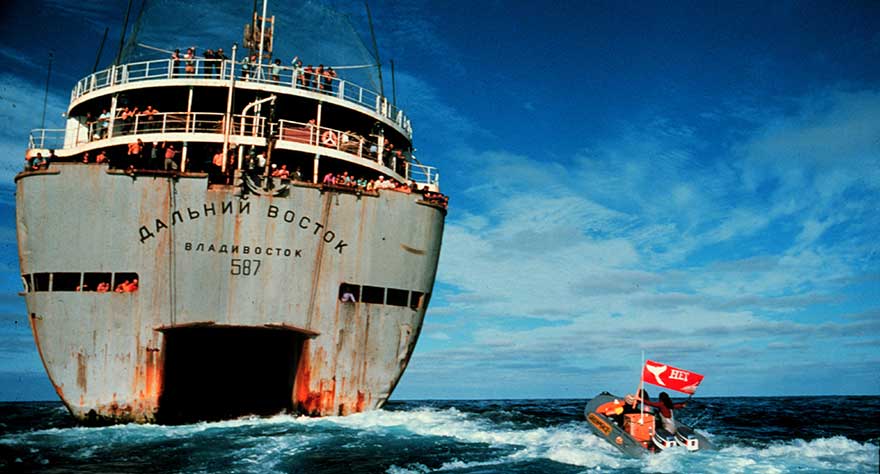
This documentary about the founder of Greenpeace is both nostalgic and moving.

This documentary about the founder of Greenpeace is both nostalgic and moving.
The birth of Greenpeace is an unusual, knotty story, rife with conflict, adventure, and the belief in the power of the individual and the image, all balanced perilously upon the notion that things can change. The same can be said about the new documentary How To Change The World, a film charting the accidental inception of Greenpeace through the inadvertent amassing of huge amounts of money, international recognition, and true power to make change in the world. It’s a thrilling documentary, edited with precision, scored with nostalgia, built from archival footage and moving interviews, all of which combine to create a complex and compelling portrait of one man.
Bob Hunter started off as a journalist writing for the Vancouver Sun. A passionate, startling voice, Hunter understood the power of the media from a young age but still felt that his writing was accomplishing little. What he needed to do was act. His chance came at the ushering of Richard Nixon and the nuclear testing on Amchitka island in Alaska. Intending to stop the testing, Hunter found himself amid a ragtag bunch of advocates and academics, including sailor Paul Watson and ecologist Patrick Moore. In the fall of 1971 the group set sail under the moniker of the Don’t Make A Wave Committee. Their goal was to park their tiny boat off the coast of Amchitka and prevent the US government from detonating the nuke.
Ultimately, the Don’t Make A Wave Committee failed and the nuclear bomb was detonated on November 6, 1971. But enough attention was garnered by the group that future testing was ceased. So, while Hunter felt he had failed, others saw the cancelation as a success. One thing was clear over everything else, the group had been infected by the desire to create change. Before setting off on their next mission, an attempt to prevent Russian whalers from whaling off the coast of California, a mission that would once again fail in the moment but succeed in the eyes of history, the Don’t Make A Wave Committee changed their name to the now iconic Greenpeace.
How To Change The World is ostensibly a chronicle of Greenpeace’s founding, its fractures, and its eventual rise into a global organization. But it is actually an exploration of Bob Hunter, his passion, his successes and shortcomings, his faults and durability throughout his campaign to save the planet. To flesh out the truths of Bob Hunter—who died in 2005 of prostate cancer—How To Change The World builds itself around Hunter’s writings (brought to life with some wonderful, writerly voiceover work by Barry Pepper) and his cartoons, which offer a levity to the oft morose and unflinching film.
Directed by Jerry Rothwell (Deep Water, Donor Unknown), How To Change The World is a tempered, thoughtful, and adventurous film. Greenpeace is, of course, an organization built on the idea of image—their first major success being capturing the video footage of Russian whalers launching a spear right over Hunter’s head—and Rothwell uses this understanding to his own advantage, highlighting the true control possessed by the seemingly hapless bunch of hippies and draft dodgers that formed the founding group. For those that don’t know the history of Greenpeace (including this writer), Rothwell keeps his cards close to his chest, letting his interviews and archive footage play out chronologically so the twists, turns, deceptions, and manipulations hit with the force of surprise and narrative escalation—a trick many docs try and fail at.
So, while the story unfolds chronologically, lingering with the organization’s first exploits, the film flutters effortlessly between an endless stock of largely unseen archival footage and blisteringly honest interviews with surviving members, many of whom are still sore and bitter about one thing or another from nearly 40 years ago. Where the film falters is with its near reverence for Hunter. First and foremost, Hunter is a man, faulted by design, and at times How To Change The World seems to remember this, mentioning some of his slips and cracks under pressure, but he is mostly portrayed as a saint. Yet as the film unspools Hunter clashes with those he’s closest with, helping incite the splinters that separate many of the founders for good. During all of this, How To Change The World takes Hunter’s side, a bias surely not intended, but clearly present. The result is a film that, while profiling a man deserving of respect and praise, feels a little too reverential in its approach.